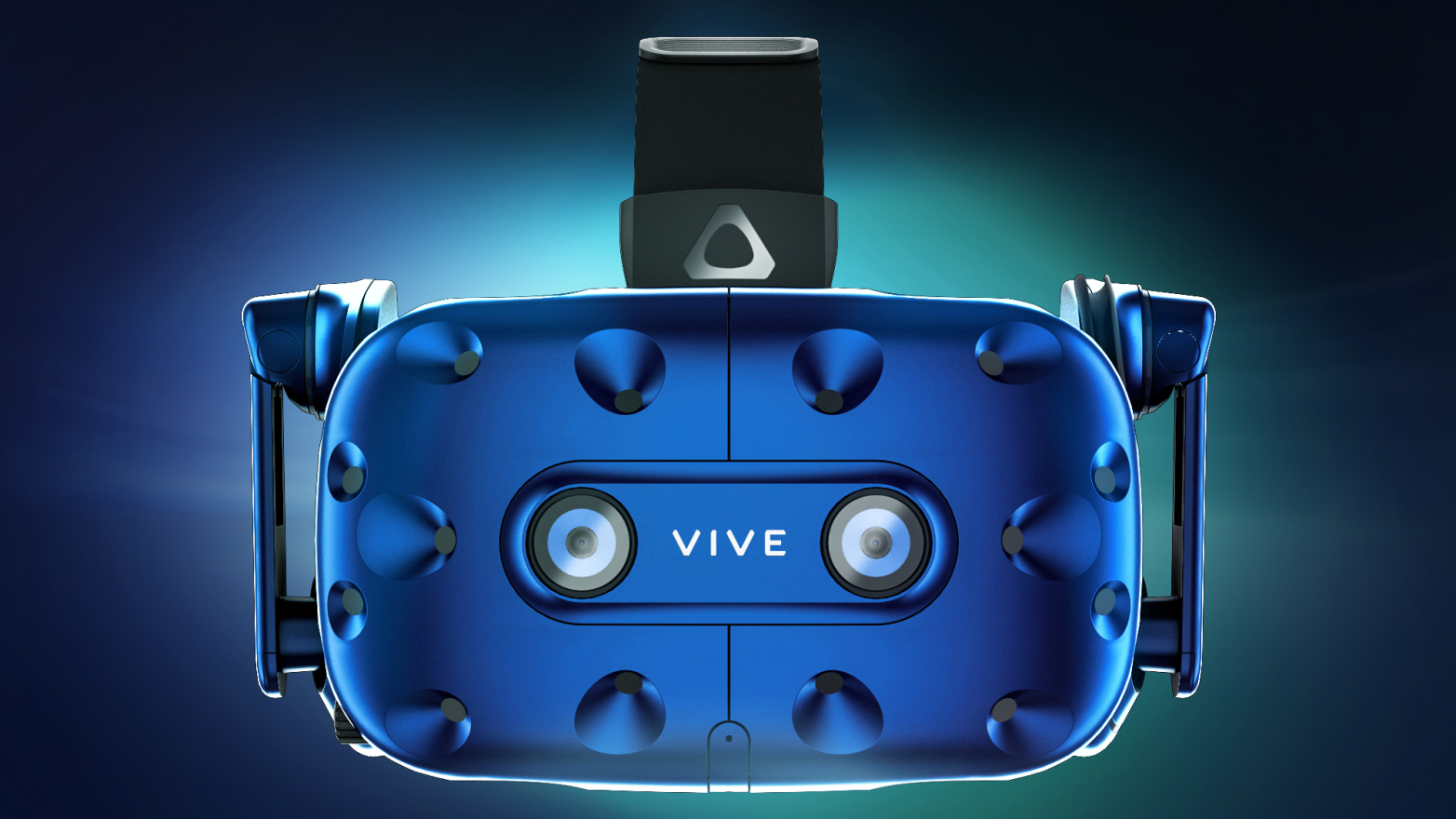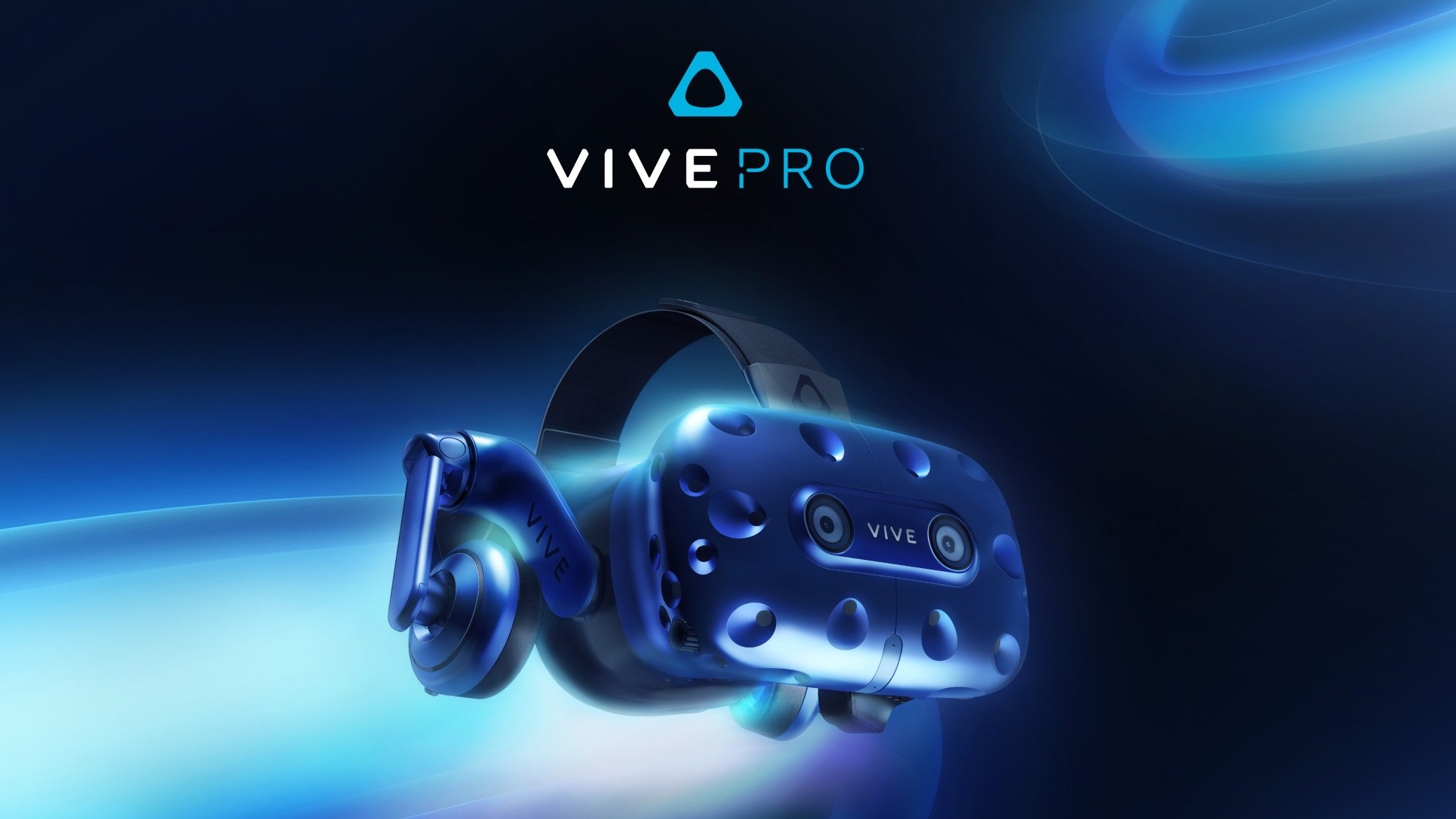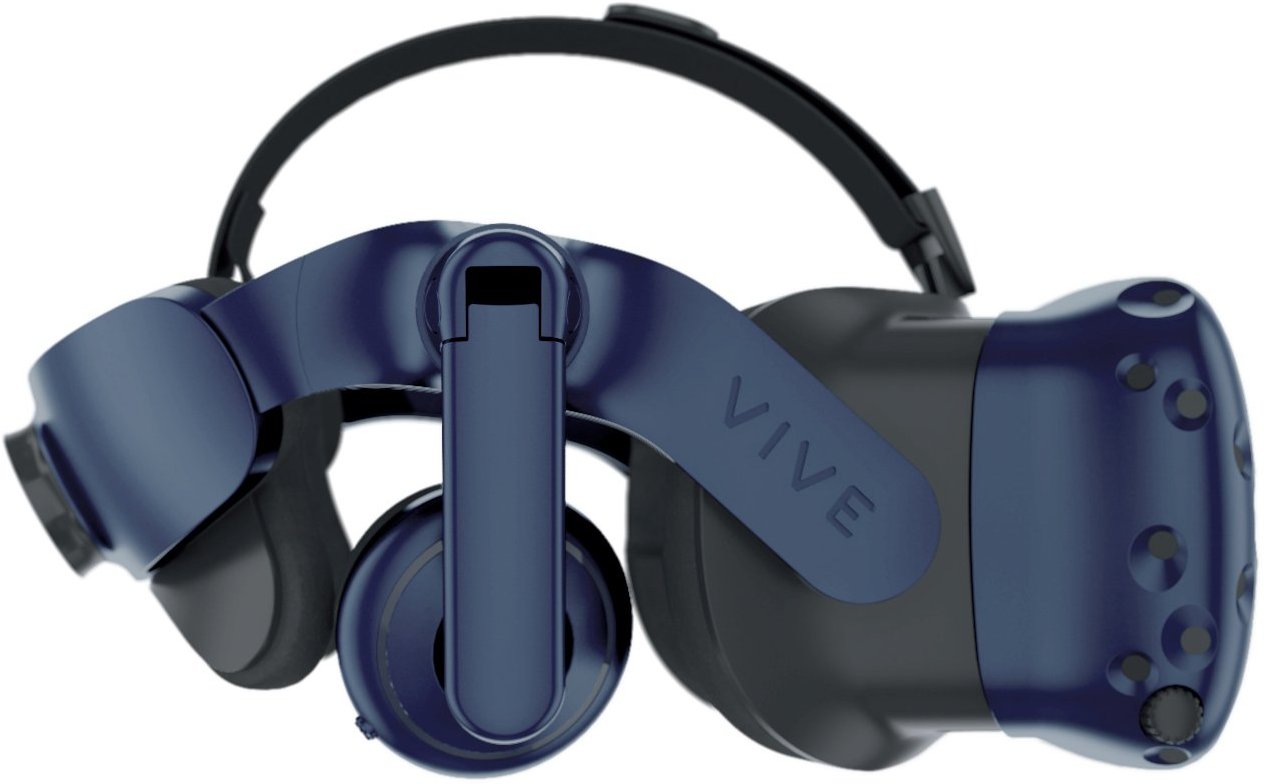The HTC Vive Pro makes me want to use VR more often, and for longer
The increased resolution isn't exactly a revelation, but the headset is way more comfortable than the original Vive.

Black Mirror loves to warn us of the dangers of technology, of how a small plastic disc gently affixed to our temple might be able to transport us to an exciting new world—a better world—but at the cost of our sanity or our souls. That disc, though! Small, lightweight, so easy to stick to your head, and probably pretty affordable. In our lame reality, we're not there yet: VR is still cumbersome and expensive, involves too many snaking cables and a bunch of plugs that need outlets and controllers bound to our wrists so we don't fling them through a window while trying to behead and imaginary goblin. We still have our souls, but we've also got sweaty faces and aching necks and a sore hand from accidentally punching a wall, and not a single spot to spare on our overburdened surge protectors.
The HTC Vive Pro isn't a little disc you stick to your face, but is significant step closer to a VR experience that's clearer, easier, and more comfortable. The Pro isn't a massive redesign or reimagining of the Vive—we're still walking, not flying—but the improvements are obvious and instant. The price, on the other hand, has gone up.

The first time I try on the Vive Pro, the improvement in comfort over the original Vive is immediately apparent. I wear glasses with plastic frames, and wearing the original Vive has always been a fairly uncomfortable experience for me. It feels like like all its weight is pressing down directly on my glasses, which sit right on the bridge of my nose, resulting in a pretty sharp pain. To alleviate that I had to tighten the Vive so much at the back and on the top of my head that it creates its own sort of discomfort by mashing my glasses directly into my face, not to mention making it so tight over my eyes that my glasses quickly fog up and I get uncomfortably warm within 10 or 20 minutes. Since my vision isn't terrible, I often wear the original Vive without glasses and just deal with a bit of blurriness—which isn't ideal when you're trying to escape into another world.
I can wear it for longer since there's not as much weight bearing down on the front of my face.
The Vive Pro, however, fits much better over my glasses and is far more comfortable in general. The redesigned, simpler straps make it easier to put on and take off, and I don't feel any real pressure on the bridge of my nose, even without completely tightening the strap on top or cranking the knob in back as far as it will go. Making adjustments and getting a good fit doesn't take as much fiddling, and I can wear it for longer since there's not as much weight bearing down on the front of my face (and considerably less heat). It's also easy to with a couple knobs to adjust the distance of the lens from your eyes or glasses, and move them further apart or closer together.
I don't have an Oculus Rift to compare with the Vive Pro (and have only used the Rift a couple of times for short sessions last year), so what I'm mainly comparing the Pro to is the original Vive, which I've used a fair amount over the past few months. In addition to being a much more comfortable headset, the Pro has built-in earphones, a big improvement—yet one that's sort of hard to give a lot of kudos to since the lack of earphones felt like an odd omission in the original headset. The Pro's headphones are easy to adjust: you can slide them higher or lower until they're centered over your ears, and can easily lock them away from your ears if you want to hear what's going on outside of the game. Two buttons on the side of one earphone can increase or decrease the volume, while another small button on the right earphone can mute and unmute the built-in microphone. I'm not an audio expert, so I'll rate the sound coming through the headphones as 'just fine': probably not as good as a nice set of gaming headphones will provide, but far better than earbuds or a cheap set of headphones.

Images are a bit clearer, cleaner, and sharper, but it's not like stepping into an entirely new VR experience.
The obvious draw of the new Vive Pro is the increase in resolution, and I've only waited this long to talk about it because it doesn't actually make as big a difference as you might expect. The Pro gives you 2880x1600 pixels (1440x1600 per eye) over the original's resolution of 2160x1200, and with a 78% increase in resolution, I guess I was expecting to be blown away by the visual improvements of the Pro. I wasn't, so either I was pretty happy with how things already looked or it's just not that massive a change. Images are a bit clearer, cleaner, and sharper, but it's not like stepping into an entirely new VR experience.
That's okay, though: I've found that great VR is more about how convincing the experience is rather than simply how convincing it looks, and visuals don't make a VR game good: interactivity does. Games and experiences giving you believable ways to be a part of the world you're inhabiting are what fool your brain, not the look of the world itself, so the Pro's resolution not being a massive improvement isn't that big of a deal.
Keep up to date with the most important stories and the best deals, as picked by the PC Gamer team.
Case in point: I've played Doom VFR and Fallout 4 VR, and I've been dabbling in Skyrim VR a bit too, and those games look great. But they don't entirely embrace VR when it comes to interactivity since they've been retrofitted into VR, whereas something like the Budget Cuts demo, which I played both at GDC and at home, does. It looks like a cartoon but feels more real simply because it's been built from the ground up with VR in mind. Just being able to reach out and pick something up, slide open a drawer, pass something from hand to hand as you would in real life without even thinking about it: that's what fools your mind into thinking you've left your room and are somewhere else. Standing in a high-res, photorealistic landscape isn't enough to trick your mind, but I've tried more than once to lean on a non-existent cartoon countertop in Budget Cuts and Rick and Morty: Virtual Rickality because the interactivity in those games is so well-designed.

Back to the headset: the new tether cable is much slimmer now, and connects to the new link box with a single plug, rather than three. That doesn't feel major, but for me, the quicker it is to get everything set up and the fewer cables and plugs I need to deal with, the more likely I am to use it. The link box also has a power button, another small yet welcome convenience because I can just toggle it on and off rather than physically plugging it in or unplugging it.
The $799 Vive Pro ships with the headset and new link box, but doesn't come with controllers or base sensors. If you've already got controllers and sensors for the original Vive, they work just fine with the Pro, but if you don't you'll have to purchase them if you plan to use room-scale VR. There will be a discounted bundle containing the Pro, two original controllers, and two original base sensors, with the extra equipment discounted to $299 (to buy two sensors and two controllers separately, they'd cost around $600 with tax), but it still means if you're completely new to the HTC Vive you'll be spending over a thousand dollars for everything.
Something else to keep in mind: improved sensors and controllers will probably be available later this year, which means the original versions may get discounted when the new ones appear. Plus, there's a wireless adapter planned for the future that will free you from your tether, so you may want to wait and see how the pricing on all of that new stuff shakes out.
I don't find the Vive Pro to be a major leap forward in terms of resolution, and the price, especially if you don't already own base stations and controllers, is pretty prohibitive. However, the Pro is great advance in comfort and design when compared to the original Vive, and maybe that's more important—both in terms of how often you'll want to put your headset on, and how long you'll want to keep it on.

Chris started playing PC games in the 1980s, started writing about them in the early 2000s, and (finally) started getting paid to write about them in the late 2000s. Following a few years as a regular freelancer, PC Gamer hired him in 2014, probably so he'd stop emailing them asking for more work. Chris has a love-hate relationship with survival games and an unhealthy fascination with the inner lives of NPCs. He's also a fan of offbeat simulation games, mods, and ignoring storylines in RPGs so he can make up his own.

